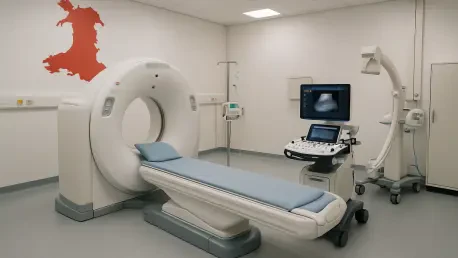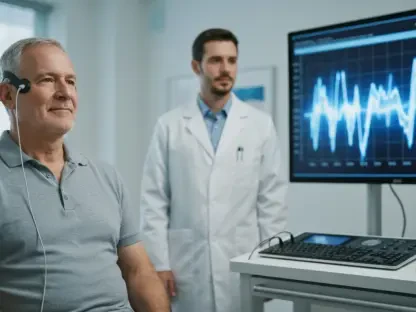Today, we’re thrilled to sit down with Ivan Kairatov, a renowned biopharma expert with extensive experience in research, development, and technological innovation within the healthcare industry. Ivan brings a wealth of knowledge about how cutting-edge advancements, like the recent diagnostic equipment upgrades in Wales, are transforming patient care and diagnostics. In this conversation, we’ll explore the impact of these upgrades on hospitals across the region, the specific benefits of new imaging technologies, and how these improvements are poised to enhance healthcare delivery for both patients and medical professionals.
How do the recent diagnostic equipment upgrades in Welsh hospitals reflect broader trends in healthcare technology?
These upgrades are a fantastic example of how healthcare systems are prioritizing precision and efficiency. In Wales, nearly £5 million has been invested to modernize equipment across five hospitals. This aligns with a global push to integrate advanced imaging and diagnostic tools to improve patient outcomes. It’s not just about replacing old machines; it’s about adopting technologies that enhance image clarity, reduce risks like radiation exposure, and streamline workflows for medical staff. This kind of investment shows a commitment to long-term improvements in care delivery.
Can you walk us through the specifics of the gamma camera upgrade at Withybush General Hospital and its significance for the region?
Absolutely. With a funding allocation of £481,000 from the Welsh government, the gamma camera at Withybush is getting a much-needed overhaul. This upgrade extends the equipment’s lifespan and ensures uninterrupted diagnostic services for West Wales. It’s critical for diagnosing a variety of conditions, from cancer to heart issues, by providing detailed imaging of internal functions. What’s more, it prevents service disruptions, which means patients don’t have to face delays in getting crucial diagnoses and treatments.
What’s the broader impact of this gamma camera on healthcare beyond just Withybush Hospital?
This equipment is a shared resource that serves the entire Hywel Dda University Health Board and even extends to surrounding areas. It’s a hub for specialist nuclear medicine imaging, which means patients from across the region rely on it for complex diagnostics. By upgrading this camera, the healthcare system ensures that a wider population has access to high-quality imaging without needing to travel long distances, which is a huge win for regional equity in healthcare access.
Shifting to the X-ray equipment upgrades at hospitals like Colwyn Bay and Ysbyty Glan Clwyd, what kind of difference will these new systems make for patients and staff?
The £4.4 million investment in X-ray systems at these hospitals is transformative. The new digital radiology systems offer sharper, more reliable images, which help doctors make accurate diagnoses faster. For patients, reduced radiation exposure is a major safety benefit. For staff, these machines are designed to be more user-friendly—think automated positioning and ergonomic features. This not only makes their jobs easier but also allows them to focus more on patient care rather than struggling with outdated equipment.
Can you elaborate on the new fluoroscopy systems being installed at Wrexham Maelor and Ysbyty Gwynedd, and the kinds of procedures they support?
Fluoroscopy systems are incredibly versatile, and the new installations at these hospitals will support a range of procedures. They’re particularly useful for real-time imaging, like observing swallowing actions in patients with dysphagia or guiding radiological interventions such as biopsies and drainages. These systems provide live feedback, which is invaluable for precision during delicate procedures, ultimately improving outcomes and reducing risks for patients.
Why is the replacement of mammography imaging equipment at Wrexham Maelor and Ysbyty Gwynedd such a critical step for patient care?
Mammography is a cornerstone of early detection for breast cancer and other breast-related diseases. The new equipment at these hospitals will enhance image quality, making it easier to spot abnormalities at earlier stages when treatment is most effective. Early diagnosis can dramatically improve survival rates and reduce the need for invasive treatments, so this upgrade is a vital step in improving women’s health outcomes in the region.
How do these upgrades contribute to the overarching goal of reducing waiting times for diagnosis and treatment in Wales?
Waiting times are a huge challenge in healthcare, and these upgrades directly address that issue. Faster, more reliable equipment means quicker turnaround for diagnostic tests. When machines don’t break down and images don’t need to be retaken due to poor quality, patients move through the system more efficiently. This creates a ripple effect—shorter wait times for diagnosis lead to faster treatment plans, which ultimately improves patient satisfaction and outcomes across the board.
What is your forecast for the future of diagnostic technology in regions like Wales over the next decade?
I’m optimistic that we’ll see even more integration of smart technologies, like AI-driven imaging analysis, in diagnostic equipment over the next ten years. Regions like Wales are already laying the groundwork with these upgrades, and I expect further investments in hybrid systems that combine multiple imaging modalities for even greater accuracy. Additionally, as costs for advanced tech decrease, we’ll likely see wider adoption in smaller hospitals, ensuring that cutting-edge care isn’t limited to urban centers. This could truly revolutionize how diagnostics are approached in public health systems.









